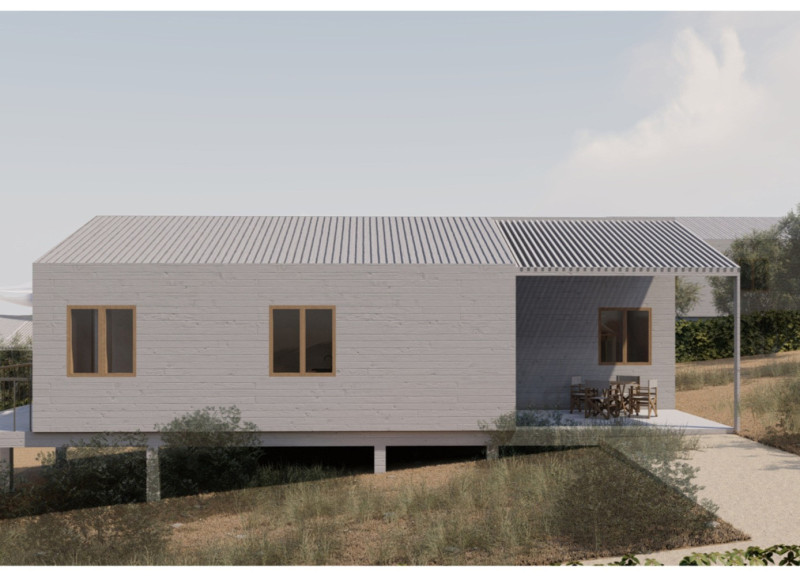5 key facts about this project
The project located near Tuzla, Romania, consists of six houses designed to promote sustainable tourism and revive an overlooked area. Intended for use during the summer months, the design integrates ecological considerations while striving to stimulate the local economy. The concept balances functionality with a respect for the environment, aiming to minimize the impact on the surrounding landscape.
Design Approach
The houses are raised off the ground, which reduces their impact on the environment. This elevation allows the structures to blend better with the natural terrain. The design encourages connections with nature and takes advantage of views. Openings and terraces provide opportunities for occupants to interact with their surroundings, enhancing the overall experience of the space.
Materials and Facade
Working with local materials is central to the project. The facade features panels that are carefully assembled to form the houses. This use of local resources reinforces a sense of place and identity. Wood is prominently used, adding warmth to the overall design. Additional features, such as a ventilated air layer within the structure, improve thermal insulation. This combination supports energy efficiency and comfort in the dwellings.
Spatial Configuration
The layout of each house is thoughtfully crafted. Each dwelling includes spaces for children's bedrooms, bathrooms, a living area, and a master bedroom. This arrangement caters to the needs of seasonal residents by offering both communal areas for gathering and private spaces for retreat. The design promotes social interaction among residents while also ensuring personal privacy.
Visual Aesthetics
The exterior is painted white, allowing the houses to blend with the landscape. This color choice reduces visual clutter and allows the buildings to harmonize with their surroundings. The way light interacts with the facades creates dynamic patterns throughout the day. This visual element adds to the overall character of the space, enhancing the relationship between the architecture and the environment.






















































